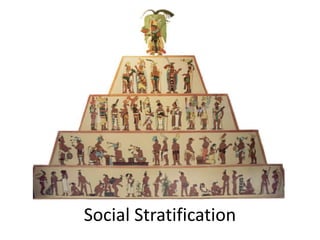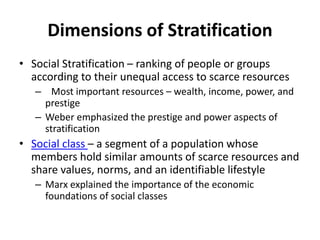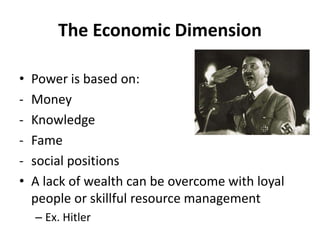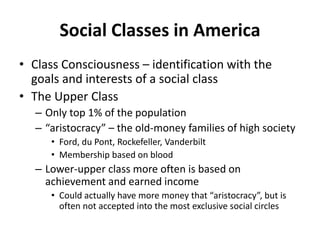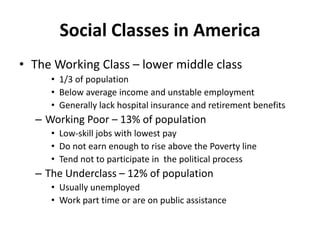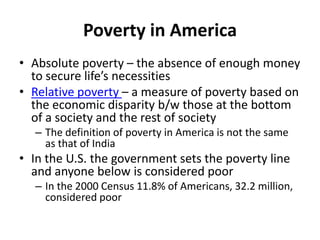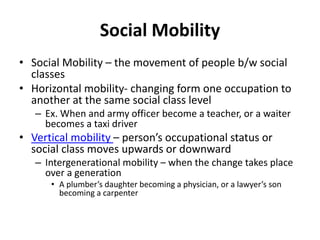This document discusses social stratification and social classes. It defines social stratification as the ranking of people based on unequal access to resources like wealth, income, power and prestige. There are three main dimensions of stratification - economic, prestige, and power. Socially, people are divided into social classes based on similar resources and lifestyles. The document outlines several social classes in America from the upper class to the working poor and underclass. It also discusses poverty in America, social mobility between classes, and explanations for the origins and persistence of social stratification from different sociological perspectives.
